Table of Contents
Amoeba
All living organisms on Earth including humans, start off as a single cell that then divides into millions of other cells. However, some species never develop beyond a single cell. . An amoeba is among this variety’s most prevalent organisms. Amoeba sp., also written as ameba, plural form amoebas or amoebae, is a single-celled, colorless microscopic protozoan, not having a regular body shape. Amoebas are mostly found in moist and aquatic habitats. in this article get a clear idea about amoeba, their structure, how it locates, how it reproduces, and many more. Let’s go…
What is Amoeba?
A sarcadian protozoan, the Amoeba is typically found in damp and aquatic habitats. Unicellular, microscopic, tiny Amoeba species are classified as part of the Animalia subclass of the phylum Sarcomastigophora. Amoeba’s body is not typical in shape. By developing pseudopodia, it transfers from one location to another.

Amoeba pronunciation
According to Merriam Webster dictionary, the pronunciation of Amoeba is Noun- amoe·ba | \ ə-ˈmē-bə \. plural- amoebas or amoebae also amebas or amebae\ ə-ˈmē-(ˌ)bē
Amoeba Classification
Since amoeboid cells only have a true nucleus and are neither animals nor plants, however, they are classified as eukaryotes. There are some disputes regarding the classification of Amoeba among scientists. Amoeba comes under the Protista Kingdom Animalia. The classification of an amoeba is represented scientifically as follows:
Amoeba kingdom
The Systematic position of Amoeba is –
| Kingdom: | Animalia |
| Sub-Kingdom: | Protozoa |
| Domain: | Eukaryota |
| Phylum: | Amoebozoa |
| Class: | Tubulinea |
| Order: | Euamoebida |
| Family: | Amoebidae |
| Genus: | Amoeba |
| Species: | Proteus, animalcule, dubia, animalcule, |
Structure of amoeba cell
As we know the amoeboid cells are eukaryotic, Unicellular. There are three main components of an amoeba’s structure cytoplasm, plasma membrane, and cell organelles.
•Plasma membrane- The outer thin, delicate, elastic external cell membrane is known as plasmalemma or plasma membrane. It consists of two darkly staining layers, about 200 Åthick separated by a clear layer. Protein and lipid molecules make up the very thin, double-layered plasma membrane.
• The cytoplasm- Inside the plasma membrane, the cytoplasm is a thick mass containing a number of organelles. It is separated into an outer and an inner endoplasm, two separate zones.
Ectoplasm-Just below the plasmalemma resides ectoplasm. It is a hyaline, non-granular, thin layer.
Endoplasm- This is surrounded by ectoplasm. It is a granular heterogeneous fluid.
• Cell organelles- Different types of cellular organelles are found in amoebas including nucleus contractile vacuoles, mitochondria, the Golgi apparatus, and fat globules.
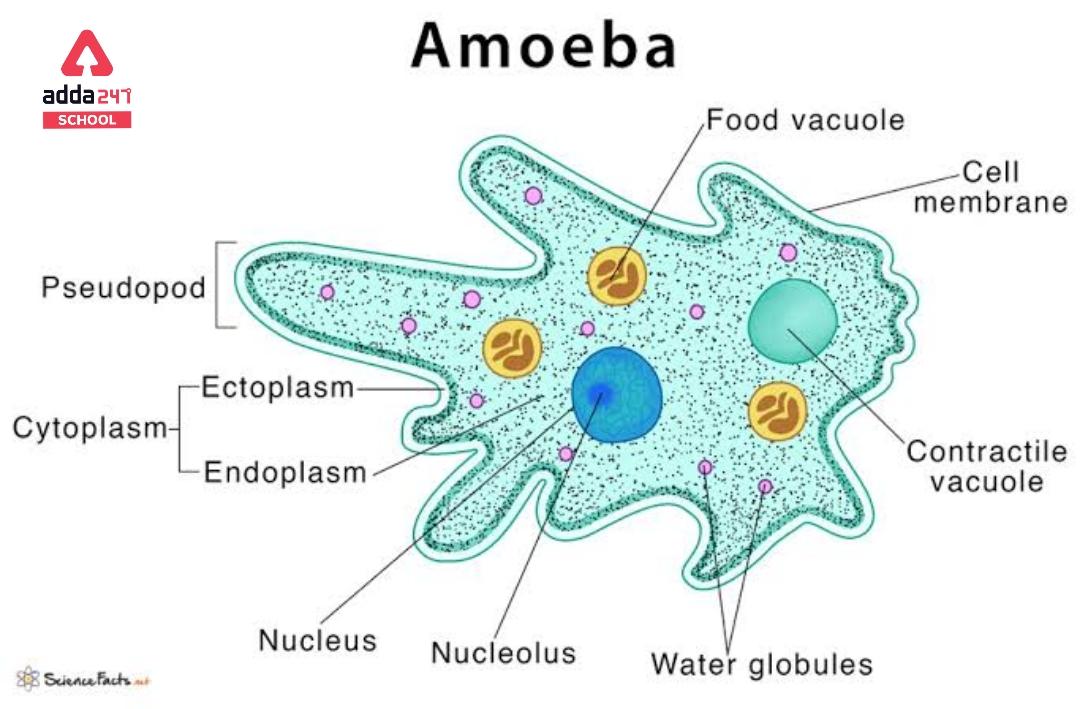
Amoeba Diagram
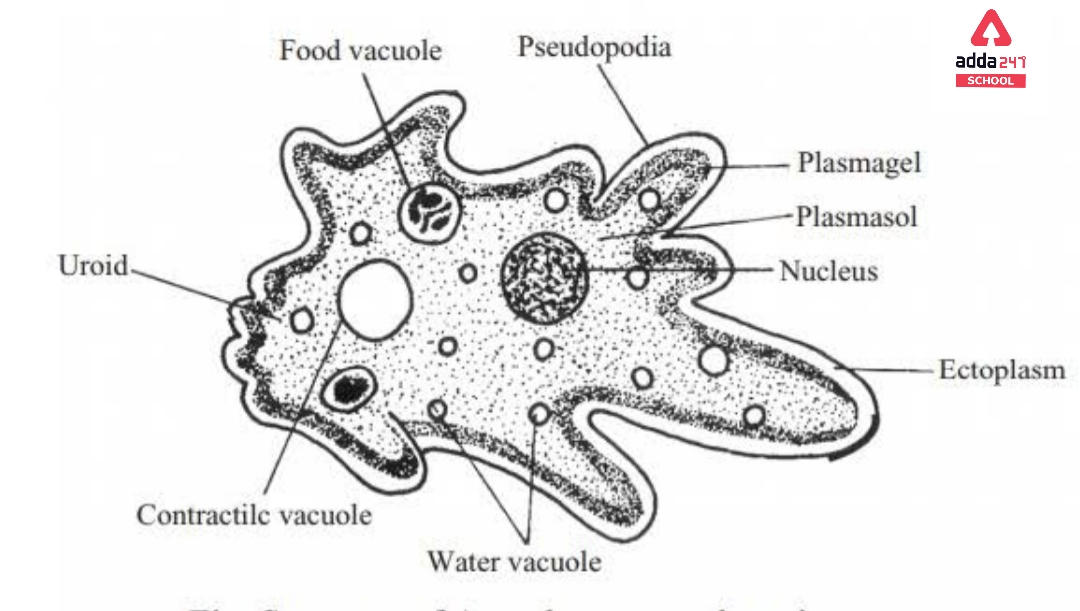
Amoeba Locomotion
As we know, Amoeba sp. has a naked plasma membrane that helps to form pseudopodia, for feeding, and locomotion. Amoe6moves through the formation of pseudopodium, this movement is known as a pseudopodial movement. There are many theories that explain the procedure of locomotion in Amoeba. Some of the theories are discussed below.
•Sol-gel theory –
Hyman proposed the solution (gel to sol) and gelation (sol to gel) as the metabolic processes responsible for the extension and contraction of the pseudopodia, respectively. Mast (1931) identified four main processes that make up the amoeboid motility of Amoeba proteus:
• Affixation to the substrate.
• The plasmasol’s posterior end gelling.
• Solation of the anterior end of the plasmagel.
• The posterior end of the plasmagel is contracting.
Plasmagel and plasmasol leak through the opening as the cap dissolve.
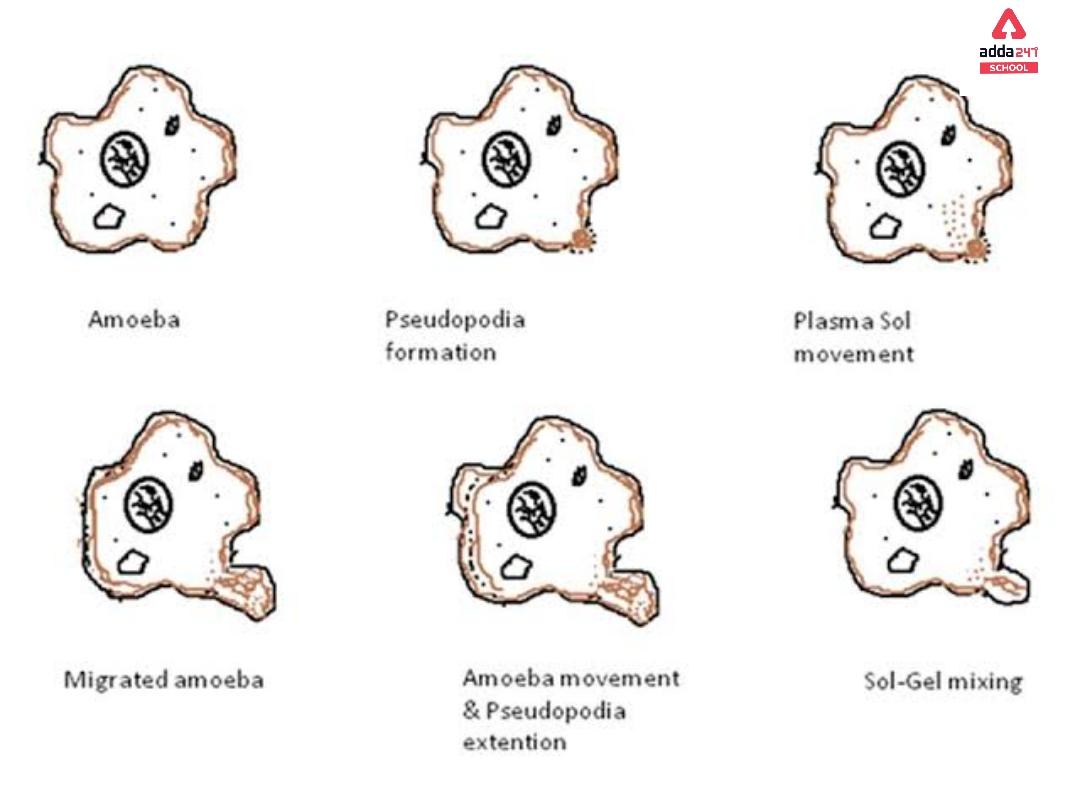
•Working movement theory
Dellinger (1906) researched Amoeba proteus motility and discovered that it extends the pseudopodium, swings it around, and brings it into the line of advance before attaching to it. He believed that the endoplasm contains a contractile material that causes the amoeba to move.
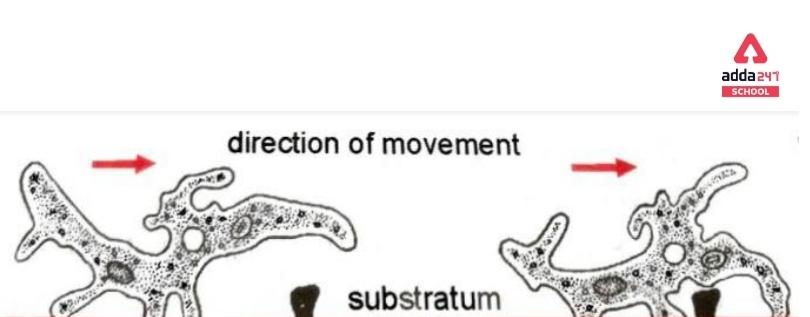
Amoeba Reproduction
Amoebas reproduce asexually, as is known. Binary and multiple fission are both included. Amoeba mostly reproduces through binary fission. Let’s examine the binary fission method of amoeba reproduction.
•Binary fission
1. When conditions are ideal—sufficient food and a normal body temperature—it reproduces by binary fission, a Eumitotic cell division.
2. The amoeba withdraws its pseudopodia and rounds off during the prophase stage. Nucleoli degenerate, the cytoplasm becomes opaque, and 500–600 tiny chromosomes develop.
4. Each chromosome splits during metaphase, where newly formed chromosomes are arranged at the equator. Each daughter chromosome attaches to spindle fibers longitudinally. The nuclear membrane is unharmed. Multiple poles can be seen within the nuclear membrane.
5. Two distinct poles form at anaphase. Its pole is where the daughter chromosomes migrate next.
6. During telophase, the nuclear membrane constricts and eventually divides into two daughter nuclei. Re-appearing nucleoli.
7. Finally, the plasma membrane constricts at the equator during cytokinesis. On the other side of the constriction, several pseudopodia develop and eventually split into two amoebae. At 240 C, binary fission occurs over the course of 20 to 30 minutes.
Unfavorable conditions allowed for this kind of reproduction. Amoeba employed multiple fission to reproduce when there was a lack of food and an increase or fall in temperature. But this is really unusual.
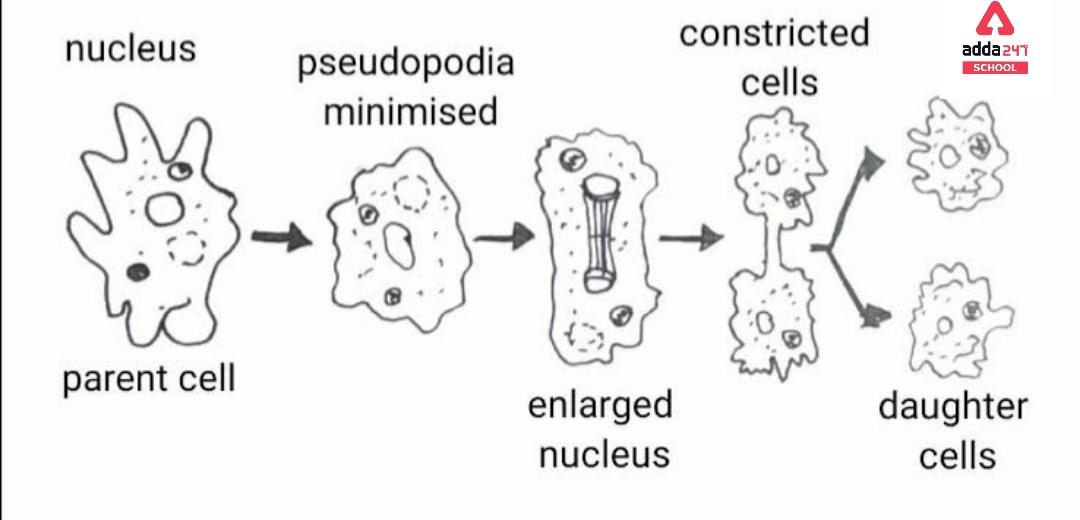
Amoeba Nutrition
Amoebae have a variety of food sources. Some amoebae are fed on bacteria and other protists to survive. Some consume dead organic matter and are detritivores.
Amoebae absorb their food through the process of phagocytosis. Phagocytosis involves extending pseudopods to enclose and engulf living prey or scraps of material. Amoeboid cells are absent of a mouth, cytostome, and a fixed site on the cell where phagocytosis usually occurs.
There is another method of feeding used by some amoebae which are known as Pinocytosis. In this process, nutrients are ingested by vesicles that have formed inside the cell membrane.
Brain-eating Amoeba
Although Naegleria fowleri, also known as the brain-eating amoeba, is an amoeboid creature that may enter the human body through the nose, it is not a real amoeba.
It primarily consumes neurons, damaging brain tissue in the process.
Amoeba Cell: FAQs
Q.How are amoebas nourished?
Typically, amoebae absorb their food through phagocytosis, which involves extending pseudopods to enclose and engulf living prey or scraps of material. Amoeboid cells lack a mouth, cytostome, and a fixed location on the cell where phagocytosis typically takes place.
Q. Do amoebas have a nucleus?
The single cell of an amoeba looks to consist primarily of cytoplasm and is held together by a flexible cell membrane. Various types of cell bodies can be seen floating in this cytoplasm. The nucleus is the easiest to spot.
Q.where do Amoeba live?An aquatic or damp environment is where the ameba can be located. warm freshwater bodies, including Ponds, lakes, and rivers
Q. What food consumes an amoeba?
Algae, bacteria, worms, nematodes, other protozoa, plant, and animal cells make up the nutrition of amoebae. They are omnivores, and the diets of each species vary. Some amoebae are predatory or parasitic, eating bacteria, other protozoa, or different kinds of cells.

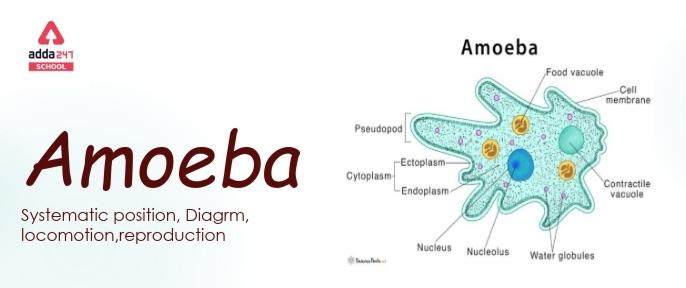

 Bihar Board 12th Result 2025 Out @ inter...
Bihar Board 12th Result 2025 Out @ inter...
 [Live Update] NTA CUET PG Answer Key 202...
[Live Update] NTA CUET PG Answer Key 202...
 UPMSP Result 2025, यूपी बो�...
UPMSP Result 2025, यूपी बो�...










